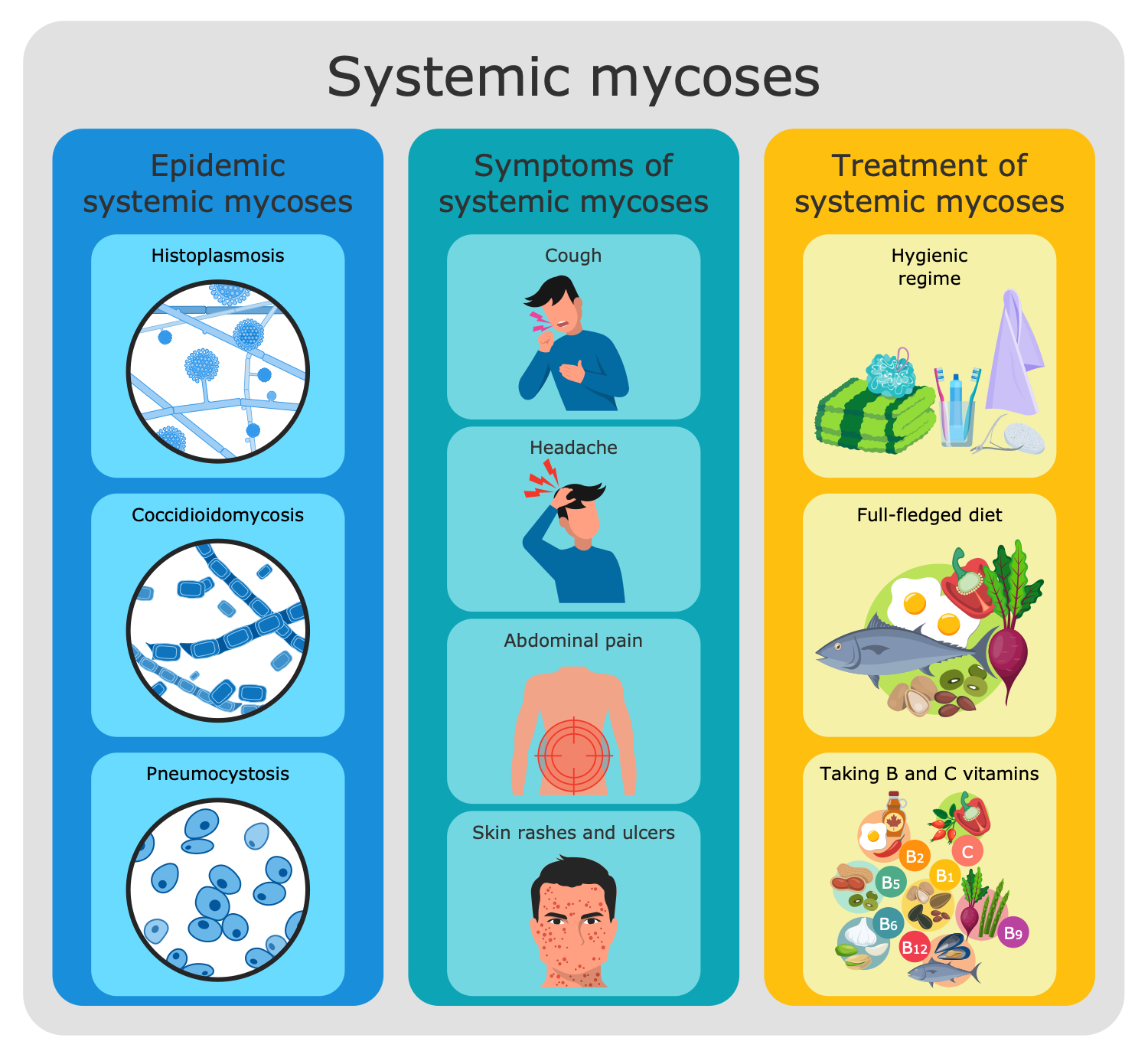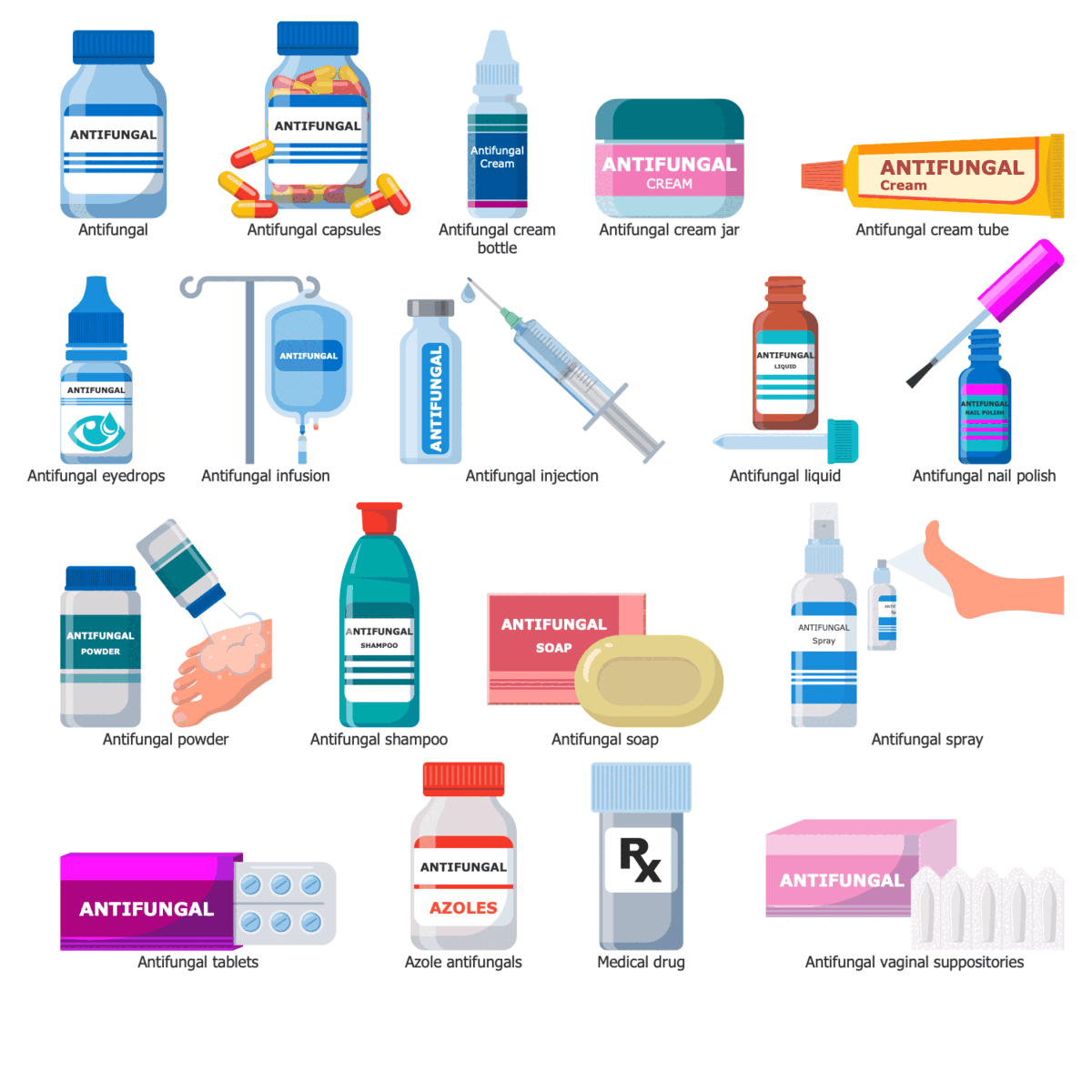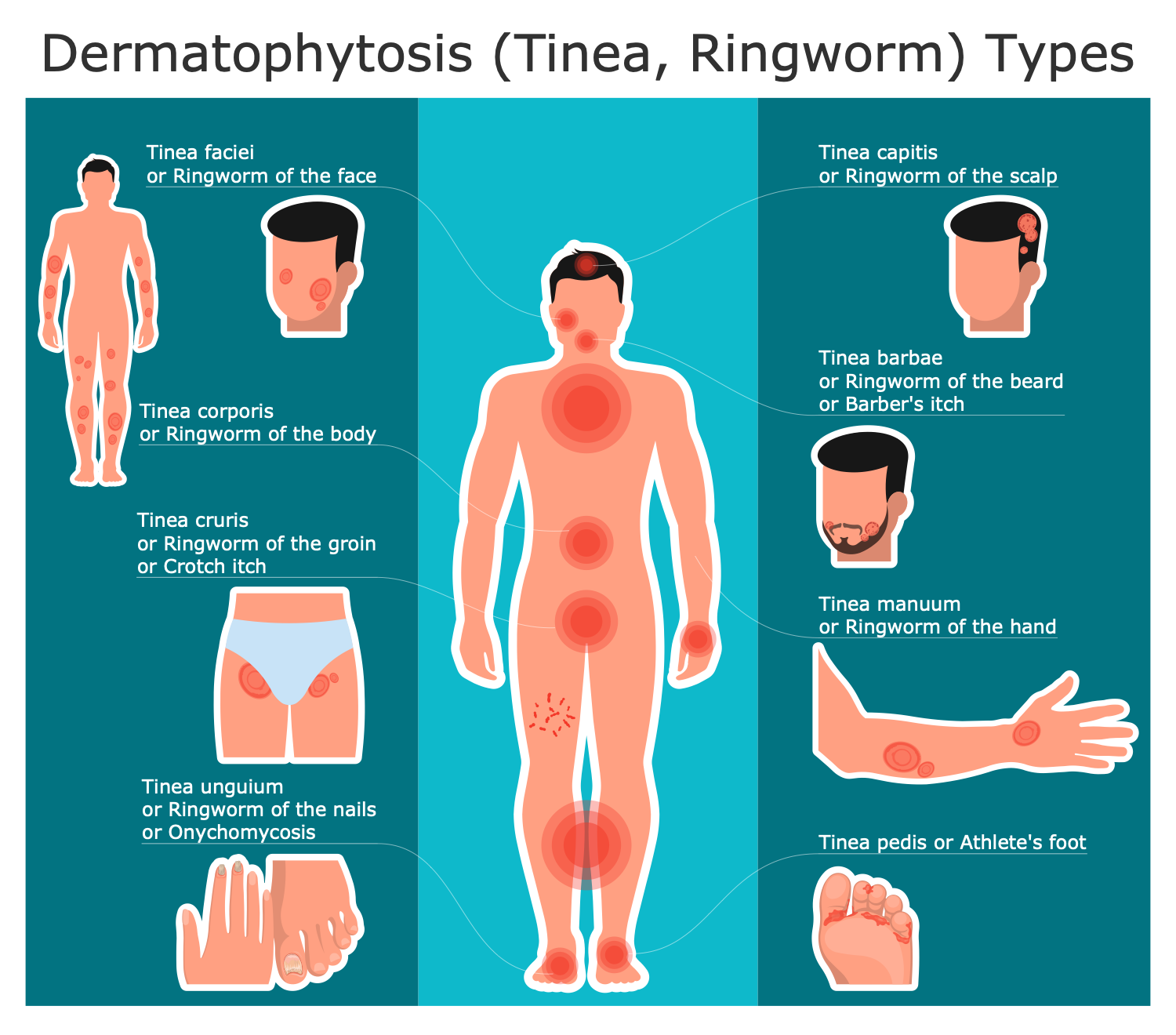Mycosis
Mycosis is an infection caused by fungi (yeast or mold). It can affect skin, nails, hair, mucous membranes, lungs, throat, urinary tract, and other organs and systems of organs in humans and animals. Fungi spread out spores into the air or environment and millions of fungi species live everywhere: on surfaces, items, plants, in soil, on the skin of humans and animals, and can cause health problems. Anyone can get a fungal infection, however, people with a weakened immune system, after operations, transplantation of organs, having changes in hormone levels, or taking immunosuppressant medications have a higher risk for fungal infections and complications of them.
Symptoms of mycosis depend on the kind of infection. The most common fungal skin infections are jock itch, athlete's foot, yeast infections, and ringworm. A fungal infection may cause irritation, redness, itching, swelling, scaly skin, blisters, rashes, bumps, peeling or cracking skin, stinging or burning sensations in the infected area, and other symptoms. Plural mycoses are life-threatening and occur when fungal infection invades the tissues and causes superficial, subcutaneous, and systemic diseases.
Common ways to get fungal infections include injuries, breaking skin, breathing fungi spores with the air, ingestion of spores in the organism with dirty or spoiled food, direct contact with an infected person or animal, visiting public spaces like public showers or locker rooms without sandals or flip-flops, sharing private items (towels, shoes, sports equipment, etc.). However, many fungi can live in the human body, but grow and harm only under certain circumstances.
There are superficial, subcutaneous, and deep or invasive fungal infections. As a rule, superficial fungal infections are not serious and are easily treated, however, treatment takes some time. At the same time, deep fungal infections are life-threatening, especially in people with a weakened immune system.
- Superficial fungal infections affect the skin, nails, and mucous membranes. They include ringworm, onychomycosis, candidiasis, tinea, and pityriasis versicolor. Ringworm, tinea or dermatophytosis is caused by around 40 species of fungi that affect the scalp, feet, and other areas of the skin. Tinea pedis fungi include Trichophyton rubrum, Epidermophyton floccosum, Trichophyton interdigitale. Onychomycosis is a fungal nail infection caused by dermatophytes, yeasts, or molds (Trichophyton rubrum, Trichophyton interdigitale, Candida albicans, Scopulariopsis brevicaulis) entering the nail through small cracks in it, cuts on the skin around the nail, or small separations between the nail and nail bed. The yeast Candida also causes thrush infection.
- Subcutaneous infections are underneath your skin and are more common in tropical and subtropical areas. They are the result of entering fungi into a cut, wound, or scratch, and cause rashes, redness, ulcers, and other symptoms on your skin. These include sporotrichosis, chromoblastomycosis, and eumycetoma.
- Deep fungal infections are those that affect the lungs, blood, brain, heart or other organs of the human body. These are histoplasmosis, blastomycosis, coccidioidomycosis, aspergillosis, candidiasis, cryptococcosis, pneumocystis pneumonia, and mucormycosis.

Example 1. Mycosis - Different Forms
Antifungal medications are used to treat mycosis. They are targeted the fungal cell membranes and the fungal cell walls without harming the cells of the human body. There are provided different forms of antifungals: lotions, creams, liquids, sprays, mouthwashes, drops, powder, shampoo, oral pills, and IV medication. The form of medication is chosen by your doctor depending on the fungi type, contaminated area, and degree of severity. Some treatments are available without a prescription, however, it is highly recommended to check with your doctor before treatment. Depending on the severity of the infection, treatment can take a short or long time, and sometimes in several stages to fully cure the infection.
Prevention of infection with mycosis includes practicing personal hygiene, keeping skin and nails clean and dry, daily change of underwear, using shoes in public bathrooms, showers, or locker rooms, using protective gloves when working with soil, also wearing protective masks and clothing when cleanup mold in the premises. In addition, don’t share your personal items, towels, or sports equipment, wear shoes that allow your feet to breathe, and take antibiotics only if they are prescribed by the doctor.
Example 2. Medical Mycology Libraries Design Elements
Striving to find the best software for medical mycology illustration, turn your attention to ConceptDraw DIAGRAM software and Medical Mycology solution. Due to the powerful drawing tools and included multifarious collection of 365 predesigned vector clipart, pictograms, and illustrative samples, it is the best assistant for creating infographics, diagrams, illustrations, and drawings.
Use Medical Mycology solution to outline the groups of mycosis pathogens, show the most dangerous fungi types and indicate who is in the at-risk group. List the ways to prevent mycosis and fungal diseases and offer an overview of the most common symptoms of mycosis to detect disease at the earliest stage. The solution is also useful to illustrate the methods of mold control and cleanup premises, kinds of antifungal medication, and ways to treat systemic mycoses.
Example 3. Dermatophytosis Types
The mycology infographics you see on this page were created in ConceptDraw DIAGRAM software using the Medical Mycology Solution. They successfully demonstrate the solution's capabilities and the professional results you can achieve. An experienced user spent 10-15 minutes creating each of these samples.
Use the powerful tools of the Medical Mycology Solution for ConceptDraw DIAGRAM software to create your own infographics and diagrams of any complexity fast and easy, and then successfully use them in your work activity.
All source documents are vector graphic documents. They are available for reviewing, modifying, or converting to a variety of formats (PDF file, MS PowerPoint, MS Visio, and many more graphic formats) from the ConceptDraw STORE. The Medical Mycology Solution is available for all ConceptDraw DIAGRAM users.

